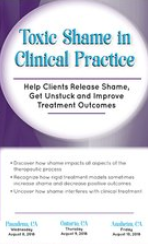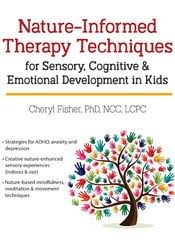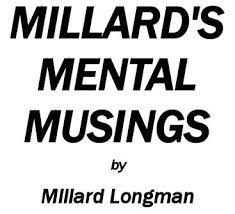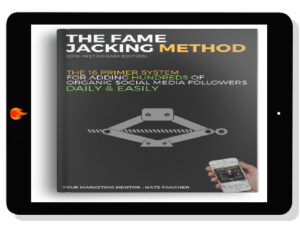Toxic shame is like an infectious disease that lies untreated due to symptoms being difficult to recognize or misdiagnosed. Learning how to recognize and treat toxic shame requires you to be vulnerable and courageous in the therapy session.
Patti Ashley – Toxic Shame in Clinical Practice, Help Clients Release Shame, Get Unstuck and Improve Treatment Outcomes
Clinicians often report feeling “stuck” and unsure of the reasons why clinical strategies aren’t working. In this recording shame expert, Patti Ashley, Ph.D., LPC, will help enhance your clinical skills using neurobiological-informed and relational-informed strategies for identifying and treating toxic shame.
Toxic shame is like an infectious disease that lies untreated due to symptoms being difficult to recognize or misdiagnosed. Learning how to recognize and treat toxic shame requires you to be vulnerable and courageous in the therapy session.
Recognizing the signs of toxic shame in the assessment and treatment process can be difficult. Here are some examples of client behaviors to watch for that could indicate shame:
Frequently cancels sessions
Terminates treatment early
Deflects and projects onto others
Narcissistic self-inflation
Perfectionism
Minimization
Anger, rage and contempt
and more
This recording will take you back to the origins of shame and help you identify the non-verbal unspoken and unseen aspects in clinical work. Understanding how shame can undermine the therapeutic alliance and using somatic strategies to deepen an authentic relationship with the client are the keys to working with toxic shame in clinical practice.
Dr. Ashley has heard other clinicians who have taken this workshop say they experienced a “sigh of relief.” This is a recording you don’t want to miss!
Summarize the nature of toxic shame as it relates to the therapeutic process.
Identify how the different attachment styles play a role in how client’s shame is formed.
Discover how toxic shame develops as a core identity and how it can be a roadblock in clinical treatment.
Correlate how toxic shame and trauma function similarly to the nervous system and how that relates to clinical treatment.
Utilize clinical strategies to help heal shame and get clients unstuck in the therapeutic process.
Develop skills to help clients regulate shame triggers both in-session and everyday living.
Would you like to receive Patti Ashley – Toxic Shame in Clinical Practice, Help Clients Release Shame, Get Unstuck and Improve Treatment Outcomes ?
PART ONE: HOW SHAME SHOWS UP IN TREATMENT
Toxic Shame
Research & Definitions
Ruptures in interpersonal relationships create a shame-based identity
Shame and trauma function similarly in the nervous system
Subconscious shame effects of poisonous parenting
Attachment theories as they relate to shame
D.W. Winnicott’s true self/false self
Shame in family, culture and other systems
Limitations of the research
Signs of Toxic Shame:
What to Watch for in Assessment and Beyond
Individual Therapy – the client who:
Talks the whole session
Frequently cancels sessions
Feels bad when progress seems to have eluded
Terminates treatment early
Deflects and projects onto others
Relapses and does not return
Minimizes problems
Excessively intellectualizes and analyzes treatment
Couples/Family Therapy
The attack/defend patter
Anger, rage and contempt
Judgment of self and others
Grandiosity, narcissism and self-inflation
People pleasing and codependency
Avoidance
Problems with intimacy
Group Therapy:
Cross-talk
Intellectualizing
Silence
Judgment
Conflict
When the Therapist is Part of the Problem
Rigid Treatment Models May Increase Shame and Decrease Positive Outcomes
Shame can be activated when therapist appears to be the “expert”
Some strategies hinder treatment outcomes
Strategies that may create barriers to creativity and relational presence
Impact of mirror neurons and epigenetics
How naming “shame” can be shaming
Unconsciously enacting shaming parent
Treating client as appointment or diagnosis
What to do when your shame is triggered in-session
PART TWO: TREATING THE TOXIC SHAME
Effectively Treat Toxic Shame
Implications for Treatment to Move Forward with Clients
Right and left brain integration
Bottom-up versus top-down treatment approaches
Modeling, engaging and sustaining self-compassion
Repair the interpersonal bridge to self and others
Courage and vulnerability in right-brain regulation
Sustaining empathy in parallel process
Transference and counter-transference in treatment
Therapeutic Strategies:
Putting It All to Practice
Build a Safe Therapeutic Holding Environment
Establish safety and trust
Set a stage for treatment
Strong foundation for therapeutic work
Build a Solid Relationship
Therapeutic empathy as the antidote for shame
Connect and establish equal power
Mindfulness and compassion
Bridge the Head and Heart
Psycho-education to demystify shame
”I” statements to identify shame-based feelings
Going beyond cognitive therapy models
Witness and guide clients through deeper layers
Return shame to its origin
Somatic strategies
Re-wiring new neural pathways
Experiential Tools and Techniques
Creative arts, writing and movement activities
Mindfulness and meditation
Archetypes, story-telling and mythology
Music and sound healing
Journaling and letter-writing
Working with Secrets
Patience and compassion
Deeper shame
Tolerance and non-judgmental witnessing
Creativity
Every client is unique
How therapy is like art
Goodness of fit
Research limitations and potential treatment risks







